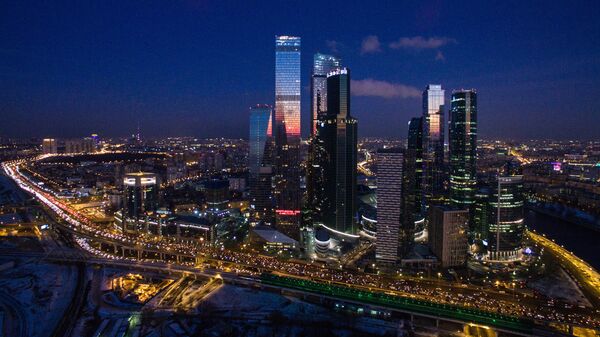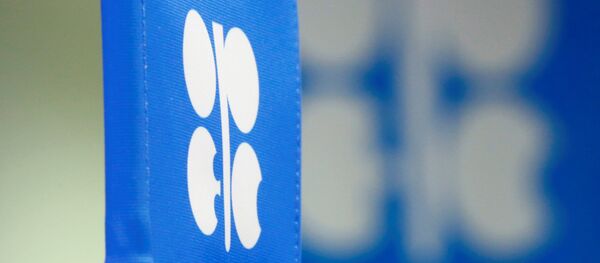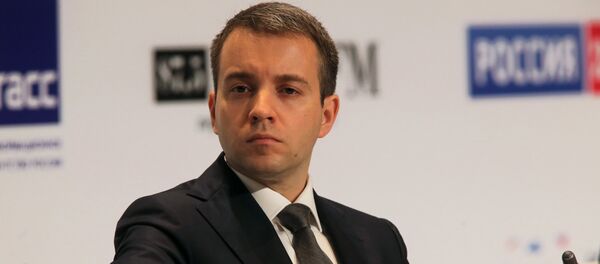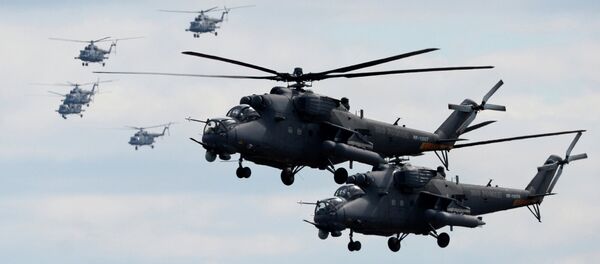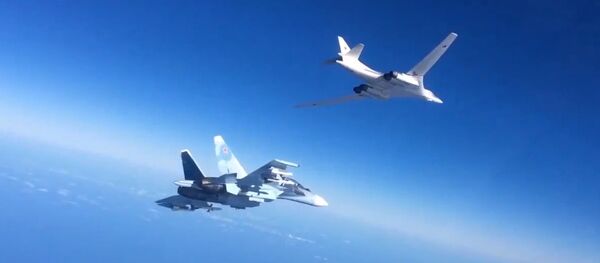MOSCOW (Sputnik) — Although the majority of the programs are long-term, a two-year period is enough time to evaluate first results and draw conclusions about dynamics of their implementation.
PROCESSING INDUSTRIES
In the pharmaceutical industry, which has been showing considerable optimism, the production during the first half of the year grew by almost 38 percent against the same period in 2015.
According to Russian Trade and Industry Minister Denis Manturov, the share of domestically produced life-saving drugs in September 2016 reached 76 percent while in 2018 it is expected to amount tvyt o 90 percent. During the first eight months of 2016 eleven new Russia-produced drugs entered the market to replace their foreign analogues.
But in some industries the results were less encouraging. The share of imports remains consistently high in the consumer goods manufacturing, although, according to the ministry, it decreased from 77 to 68 percent.
In the machine-tool engineering the progress is even slower as Russia remains heavily dependent on foreign suppliers. The share of imports, even though still amounts to 88 percent, decreased by 4 percent.
To address the issue, the government made a decision to double the support of the domestic machine-tool engineering — if in 2015 it received 1.5 billion rubles from the state, in 2016 some 2.7 billion rubles have been allocated to the companies.
At the same time, Russia managed to double in 2015 the production of agricultural machinery while in 2016 the share of imports amounted to 48 percent compared to 60 percent in 2014.
DEFENSE INDUSTRY
Following the Western sanctions, the Russian defense industry faced a challenge as imported components were involved in the production of a significant number of the Russian armaments. The delivery of critical components for the Russian military products was halted or threatened.
In June 2014, the Russian Defense Ministry unveiled a plan to substitute imported components in the production of 826 models of weapons and military equipment until 2025.
Both types of warships are powered by M90FR gas turbines built at Zorya-Mashproekt in Ukraine, a premier surface shipbuilder back in the Soviet era. The delivery of the engines has been halted due to Kiev’s export ban against Russia in 2014.
NPO Saturn, a Russian aircraft engine manufacturer, was awarded with a contract to develop and test a domestically-manufactured replacement for the M90FR turbine engine in 2017.
In December 2016, the Russian Defense Ministry said that the second batch of frigates of Project 11356 would receive the Russian power plants M-70FRU by 2020 while engines for 22350s could be delivered by 2018.
In April 2016, the Russian Defense Ministry said that the Project 20385 Gremyashchy corvette, a sophisticated new Russian naval ship, would be equipped with domestically made engines instead of those produced by the German company MTU. The warship's state trials will begin in 2017.
Significant results have been achieved in the aerospace field. The windshields of the multipurpose Sukhoi Su-30SM fighters have been equipped with collimator head-up displays (HUD) IKSh-1M developed by the Ramenskoye Design Bureau instead of the French Thales HUD 3022.
The program of helicopter turboshaft engines localization is also gaining momentum. Thus, by 2017 it is planned to increase production of the VK-2500 engines to 350 units to almost completely cover the needs of the state defense order while in 2016 the development of PD-12B turboshaft engine to replace the Ukrainian D-136 for the Mil Mi-26 helicopters was launched.
Besides, the production of electric driven pumps for the T-14 Armata and the modernized T-72B3 tanks, Kurganets-25 tracked armored platform and BMP-3 amphibious infantry fighting vehicle as well as ofnight vision devices instead of imported French and Belarusian products was launched this year.
In September, Deputy Defense Minister Yuri Borisov said that the companies of the Russian defense industry have already substituted Ukrainian imports by 70-80 percent and intend to complete the program in early 2018. At the same time, NATO-produced components according to government plans could be substituted as early as 2021.
AVIATION
At the same time, Russia is implementing import substitution programs in the civil aircraft manufacturing primary affecting two new aircraft the industry is bidding on — Irkut MC-21, Russia’s new mid-range passenger jet with a narrow-body design expected to carry out the first flight test in the early 2017 ahead of the serial production scheduled for 2018, and the Sukhoi Superjet 100 (SSJ-100) twin-engine regional passenger airliner.
Its development by the Aviadvigatel Corporation in Perm, central Russia, began back in 2008, on the basis of the PS-12, an updated variant of the PS-90. The PD-14 program comprises a whole family of engines with a thrust on takeoff of between 9 and 18 tons, including the PD-14A, PD-14M, Pd-10, and PD-18R, which could be mounted aboard the jets of different class.
The engines are currently undergoing the final stages of development and testing aboard an Ilyushin Il-96-300 four-engine long-haul wide-body airliner. Five of them have been assembled in 2016.
Russia's United Engine Corporation (UEC) aims to manufacture up to 50 such engines per year by 2023. The plane will be equipped with the PD-14 by the end of 2017; the sales of MC-21 airliners with the latest Russian PD-14 engines will begin in 2019.
The share of imported parts in SSJ-100 reaches 72 percent taking into account the engine assembled at a joint Russian-French plant in Rybinsk.
The Ministry of Industry and Trade plan, approved in 2015, suggests a replacement within five years of 10 out of the 22 Superjet’s imported components with domestically manufactured analogues, while the rest could be partially imported. In the MC21, eight of the 35 components must be completely Russian. Rostec, Russian Helicopters, UEC, Technodynamica and KRET are involved in the implementation of the program financed via the industry development fund.
Besides, the Russian government intends to displace Boeing and Airbus long-haul aircrafts from the domestic market, Russian Deputy Prime Minister Dmitry Rogozin said in April announcing the development of the long-haul aircraft on the basis of the legendary Il-96-400. A total of 50 billion rubles will be allocated to the corresponding program to be implemented by 2021.
The program is vital for the country as the domestic passenger transportation in the long-haul segment after the collapse of the Soviet Union has been carried out almost exclusively by the planes manufactured by Boeing and Airbus.
Original Il-96 made its maiden flight in 1988; it was manufactured at the Voronezh Aircraft Production Association until 2009 when the production was suspended since fuel efficiency of the aircraft was relatively low in comparison with Boeing and Airbus. However, amid the devaluation of the Russian ruble, low manufacturing price of the plane makes it more attractive for the local airlines. Besides, the aircraft could be equipped with the advanced PD-14 engines, which could make it fuel-efficient.
According to Rogozin, the updated Il-96-400 will meet Russia’s basic needs both for regular long-haul flights from European part of the state to the Far East, and for charter trips during the holiday season.
The updated passenger plane, some 100 feet longer than its Il-96-300 predecessor, will feature 370 seats on planes including business class, and some 400 seats for the plane's all-economy version. The wide-body jet is expected to feature multiple modifications, including a transport one, which can also be used by the Russian military as a tanker.
AGRICULTURE
Apart from the political aspect — response to the sanctions imposed against the country over the Ukrainian crisis — the countersanctions were intended to stimulate Russia's agricultural production.
In October 2014, the cabinet approved an import substitution road map for Russia's agricultural industry, which stipulated development of the relevant infrastructure and logistics, as well as the regulation of customs tariffs. Almost a year later, in August 2015, the government approved 464 investment projects in the sector including 166 seeking to modernize dairy farming and 197 projects for the development of the meat and poultry industry.
According to Tatiana Radchenko, the deputy head of the Russian government's Analytical Center, during 2014 and 2015, the country’s production of meat and poultry grew by an average of 10 percent, while the production of cheese products increased by 10.6 percent and butter by some 3.2 percent. The share of imported meat and poultry on the national market decreased to 13 percent in 2015 from 27 percent two years earlier. The share of imported butter dropped by 10 percent from 36 percent and proportion of the imported cheese decreased from 48 to 23 percent.
Last year, the country’s agricultural industry recorded annual growth of 3 percent while the overall economy contracted by 3.7 percent. In 2015, Russia’s agricultural exports came to $16.2 billion.
In 2016, Russia is expected to produce some 64 million tons of wheat, while the total grain harvest is likely to reach 116 million tons exceeding the country’s previous record set back in 2008 when farmers produced 108.2 million tons of grain. Some 40 million tons of this harvest is expected to be exported abroad, which is 8 million more than the last year.
Grain is the major part of the Russian food exports (it accounts for 37.4 percent of the value of all food products), followed by fish and seafood (19.6 percent) and vegetable oil (13.2 percent).
Besides, Russia has started exporting pork and poultry and produced 1 million tons of sugar more than is needed for the domestic consumption, which allowed for the first time in the history of the country to export sugar.
Prime Minister Medvedev announced that in 2017 the government does not intend to reduce the amount of state support for the agriculture allocating 214 billion rubles which is comparable with 2016 numbers.
Addressing the Federal Assembly on December 1, President Putin noted that not so long ago the government officials spoke about the agriculture industry as a black hole that can swallow any amount of funds but produce no results.
“No, it turned out, even that sector could be rearranged. We found weighted solutions, adopted a state programme, created a flexible system of support for agricultural producers and agribusinesses, and today farming is a successful industry that feeds the country and is gaining international markets,” the president pointed out.
Never miss a story again — sign up to our Telegram channel and we'll keep you up to speed!

